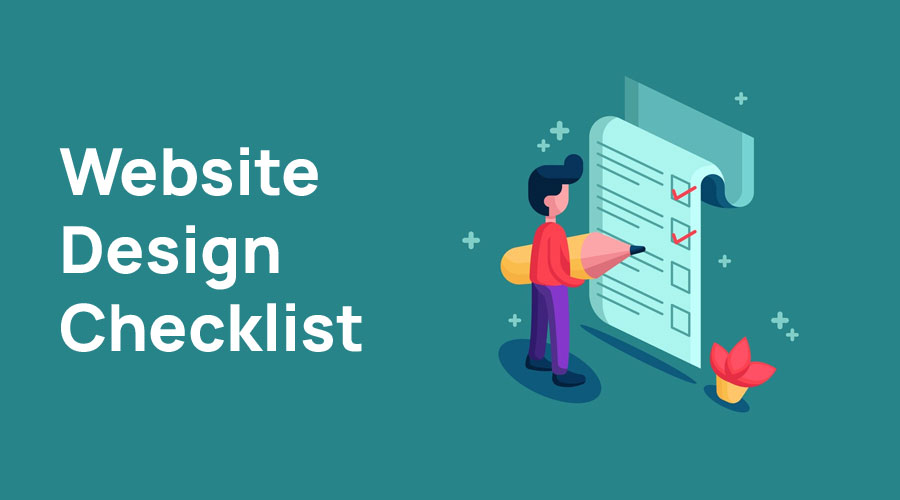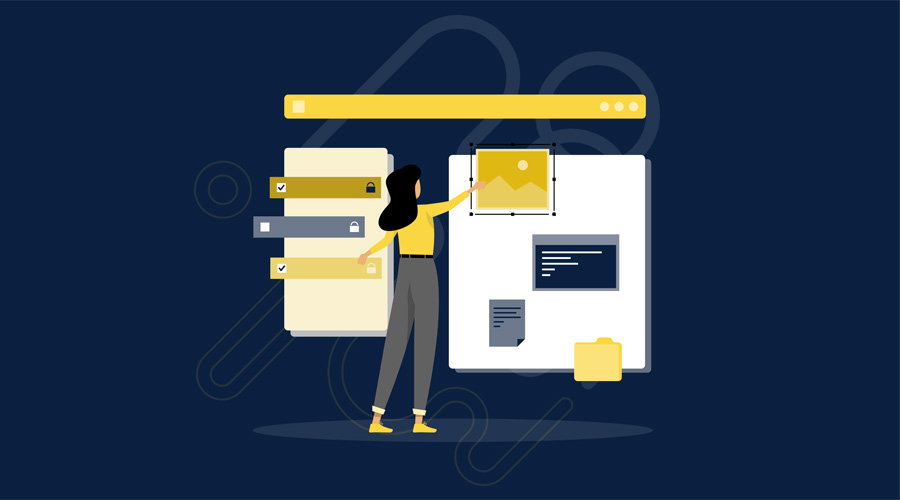The Powerful Website Design Checklist for 2024

In today’s world, having an online persona in the digital world is a necessity. You can expand your reach and pave your brand to new heights. However, from developing and designing a site to its launch, there are several phases that need to be considered. Anyone can become overwhelmed while managing all the aspects together. However, with a website design checklist, you can focus on all the factors properly and avoid missing any important phase while launching your brand’s website.
In this article, we have shared an excellent website design checklist that will help you streamline the whole process.
The Powerful Website Design Checklist
Check out all the top pointers that will help with the ultimate website design!
1. Set Your Goals Straight
Before starting with the layout, you need to set realistic goals that align with your overall brand’s image and growth. If possible, go through the competitor sites and make a list of upgrades and new features you may want to add. Making a list of everything that works and doesn’t also helps in shaping the new design well. Research is the key to understanding users and creating a brilliant website design that fulfills their specific needs perfectly. So, it is essential to conduct proper research and jot down all the points that you need further.
2. Analyze Your Existing Website
This is a crucial step to measure the current pages, site structure, and other design aspects. Having a look at the current website performance is a marker of learning from all past mistakes and improving on them. Pinpointing the strengths and weaknesses by conducting research between both your and competitors’ sites will provide an eagle-eye view of all notable design issues. You can also collect all worthy insights from a user design testing report for better analysis.
3. Set your website design budget
Once you have analyzed your existing website, it is time to decide on a budget for the design phase. It is a crucial point to mark down on the website design checklist as it gives you a clear picture of the funds in your hands.
There are several aspects to consider while designing the website for your brand, and you can easily get overwhelmed with the process. With proper clarity of the funds, you can allocate the required amount for the critical aspects and avoid going out of budget while designing your website.
4. Set time frames
Setting clear time frames is crucial in a website design checklist. The defined deadlines will ensure an organized and efficient completion of the whole design process.
First, establish a project timeline and then break it down into phases like planning and plotting, designing, development, testing, and final launch. Then, you have to assign specific dates or timeframes to all the phases. Make sure you consider the complexity of the project before fixing the deadlines.
With these timeframes, you can maintain accountability and prevent any unnecessary delays. On top of this, these deadlines will give a clear picture to all your team members, stakeholders, and clients, which will further elevate the transparency level.
5. Define your target audience
Defining your target audience is another important point on the website design checklist. When you know your target audience, then you can design the website to attract them and boost your growth. You can pick the correct theme and write content according to your target audience.
For example, if you are going to create a B2C website, then you need to focus on fine details of your customers, like education, location, age, gender, needs, etc., to offer an exceptional experience through your online website.
6. Prepare Content Strategy
After defining your website’s purpose, target audience, and key messaging, start planning your content strategy. You have to conduct thorough research to identify competitive keywords, SEO considerations, and user preferences. You can develop a content plan that outlines page structure, information architecture, and a content calendar.
You have to prioritize creating high-quality and engaging that complements your brand aim and vision. You can add several multimedia elements to further enhance the reachability of your content. A well-prepared content strategy improves user experience and streamlines the design and development process.
7. Web Design Trends
Next on the list is another vital pointer that you need to consider before diving into the actual design of your website. You have to research all the top web design trends so that you can incorporate the latest features in your website to attract customers.
8. Choose Platform
It is time to pick a platform to design your website. There are several options that you can use to design the website. Let us discuss the three top approaches.
• Custom Website Development
In custom website development, you can opt for a custom platform and design all the elements from scratch. The website will be designed according to the custom needs of your brand and complement your brand’s vision. You may need to hire a professional designer to complete the whole design process.
• WordPress Development
WordPress is a popular CMS option to create your website. You will get several beautiful themes that you can use to design your brand website. Moreover, you will get a wide collection of plugins that you can integrate with your website to further elevate its functionality. Moreover, you get a content editor to add content to your website without any unnecessary hassle.
• No-Code Website Builders
Well, if you don’t have any technical knowledge to develop a website, you can opt for a no-code website builder to create a beautiful one for your brand. You can use the simple drag-and-drop facility to add and remove elements from your website. You can complete the whole design phase in a couple of hours without any professional help.
9. Graphic design
Now, it is time to add visual elements to your site. The visually appealing elements can attract more customers to your brand’s website. However, make sure that they don’t affect the overall loading speed of the site. Nobody likes to wait on the website so that all the elements can be loaded properly, as the attention span of the visitors is pretty short. You can hire a professional graphic designer to design custom elements according to your requirements.
10. Development Complexity
You need to have a complete understanding of the development complexity to create a user-friendly website for your brand. You have to pick a technology stack and programming language in which you are going to develop your website. Both choices will have a major effect on the development complexity. Moreover, the overall website design, compatibility with several browsers, third-party app integrations, data security, user authentication, etc., will further elevate the level of complexity.
However, make sure you keep your website scalable so that you can add more features as your brand grows in the coming years.
11. Mobile Optimization
Mobile optimization is an essential point on any website design checklist. Today. A huge chunk of the world’s population opts for smartphones to find the desired products and services. So, your website should be able to perform well on mobile so that visitors can access it and opt for your services.
Moreover, you get a golden opportunity to put your brand in the hands of tons of potential customers without going through any unnecessary expense.
12. Search Engine Optimization
SEO is another critical pointer that is present on all the website design checklists. It is a vital aspect that allows your website to rank at a better position on the popular SERPs. There are several guidelines that you need to follow to perform the SEO optimization.
There are several platforms that allow you to develop your website and perform SEO side by side. With a better rank on popular search engines, you can attract more traffic to your site and boost the growth of your brand.
13. User experience
User experience plays a vital role in retaining potential customers on the site. You have to design all the elements and functionality of the website so that the visitors enjoy an exceptional user experience. Your site should be responsive and work on all different screen sizes so that users can access it on different devices without any issues.
Moreover, the website should be navigational-friendly. Your target audience should be able to navigate all the services and products without any hassle. On top of this, they should quickly access all the content without waiting for a long period of time.
14. Set the quality standard
You have set certain standards for the overall quality of all the elements of the website s that you can ensure that the end product will be developed according to the user expectations. From visual elements to core functionality, you have to set a baseline mark for everything.
For example, the content on the website should be engaging, grammatically correct, and error-free. The overall design should be interactive and prioritize on better user experience.
15. Test before you go live
At last, you should always test your website before making it live for the audience. While testing, you can check for several bugs and errors and remove them before launching your site. This will make sure that the end product is according to the set parameters and will meet the user’s expectations.
There should be proper performance tests to make sure that the site can handle the traffic even in stress conditions. Moreover, all the security protocols are working properly to safeguard the sensitive data present on the site. The rigorous testing will help you find all the minor and major holes and fix them so that you can offer an outstanding end product to the users.
Final Verdict
The key is to engage more traffic to rise in the online arena and take your brand’s name to the next level. This website design checklist will help you oversee everything carefully so that you can launch an excellent website at the end.
Image source: Freepik




